How do children learn to read?
The past few years have yielded interdisciplinary insights into the process of learning to read, gathered from developmental psychology, cognitive neuropsychology, developmental linguistics and educational intervention research. Increasingly, this is becoming the most studied aspect of human learning with dozens of journals publishing empirical research on reading. Major research syntheses in Australia, the UK and the US have been consistent in their findings on learning to read and the teaching of reading; a body of knowledge which is now known as the Science of Reading.

The ultimate goal of all reading instruction is for students to understand what they read. Two respected models that inform our planning and instruction of reading are The Simple View of Reading and Scarborough's Reading Rope. The Simple View of Reading demonstrates that Reading Comprehension occurs only when students have both Decoding skills and Language Comprehension skills. Children need these essential skills to get the words off the page as well as knowledge, vocabulary, and a good understanding of how our language works in order to comprehend what they read. These are further detailed in Scarborough's Reading Rope. We provide instruction that will help students achieve these goals.


What needs to be taught so a child learns to read?
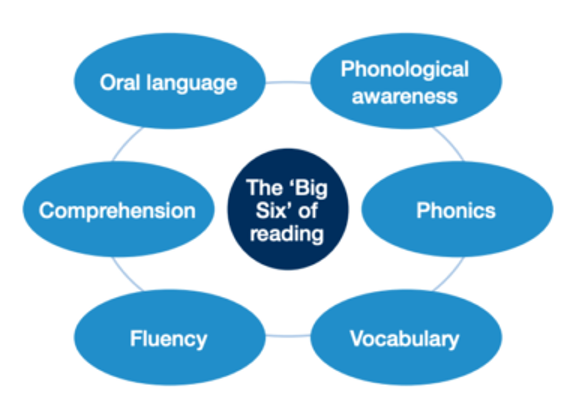
The Simple View of Reading, Scarborough's Reading Rope and the Big 6 of Reading are all referenced in the 2023 EQ Reading Position Statement: https://education.qld.gov.au/curriculums/Documents/reading-position-statement.pdf.
What is Oral Language?
Oral language is the system through which we use spoken words to express knowledge, ideas and feelings. Oral language is often associated with vocabulary as the main component. However, oral language is comprised of much more.
In the broadest definition, oral language consists of six areas: phonology, grammar, morphology, vocabulary, discourse, and pragmatics.
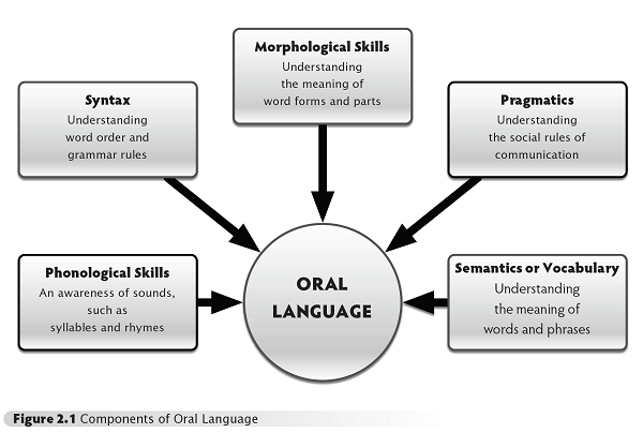
What is Phonological and Phonemic Awareness?
Phonological awareness is a crucial skill to develop in children. It is described as sensitivity to the sound structure of language. It is strongly linked to early reading and spelling success through its association with phonics. It includes recognising phonological patterns such as rhyme and alliteration, awareness of syllables and phonemes within words and hearing multiple phonemes within words.
Phonemic awareness is a critical subset of phonological awareness. Phonemic awareness refers to the specific ability to focus on and manipulate individual sounds (phonemes) in spoken words. Phonemic awareness is auditory and does not involve words in print. It includes:
• blending
• segmenting
• deleting/manipulating sounds
Since 2020, Dutton Park State School has used the Heggerty Phonemic Awareness Program in Prep-2. Building on this, its complementary intervention program for Years 3-6, Bridge the Gap, is used to support students as required.
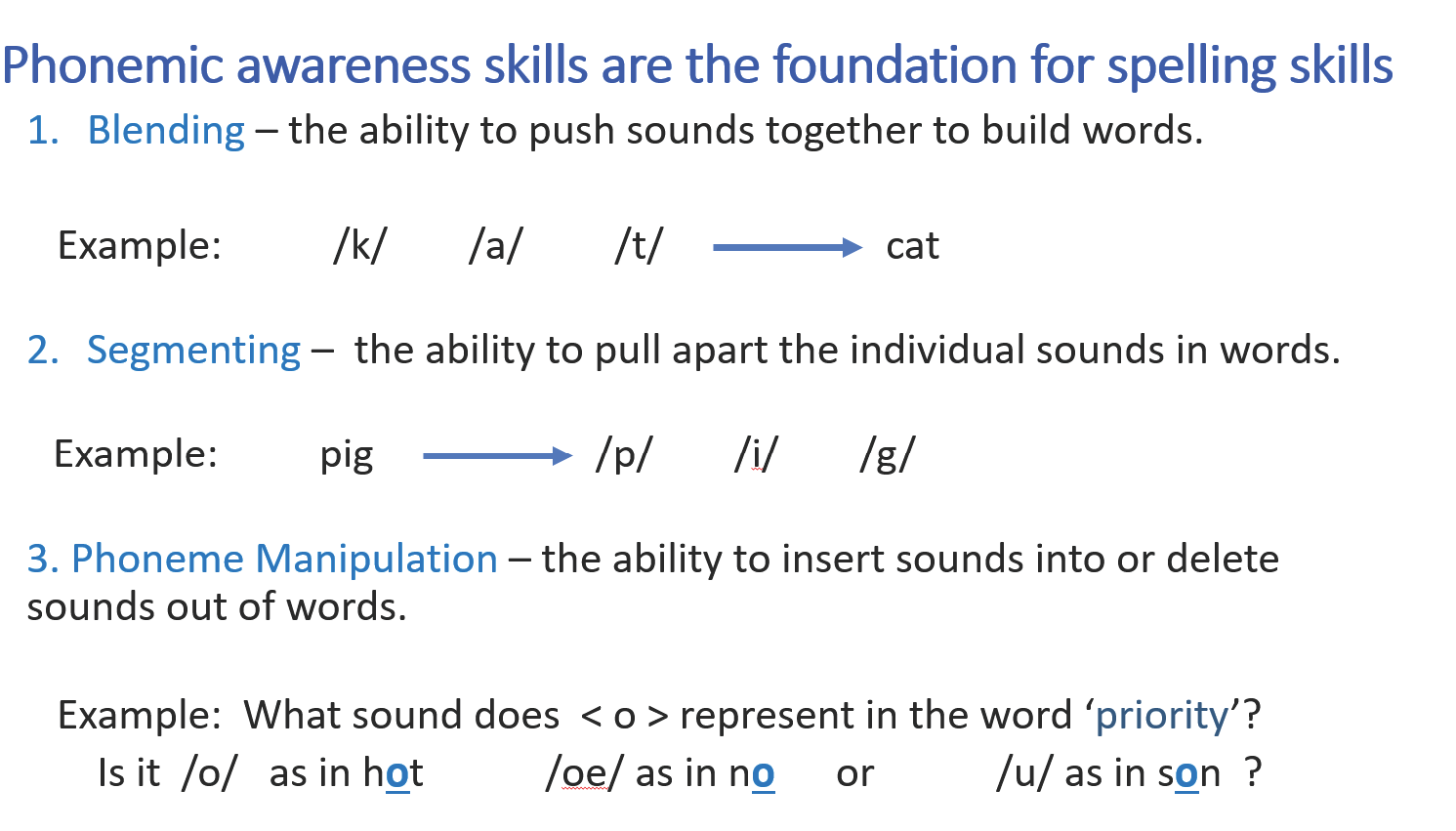
What is Phonics?
Phonics is concerned with sound-letter relationships in written words and builds upon a foundation of oral language and phonological awareness. Phonics instruction helps children learn the relationship between the sounds of the spoken language and the written letter/s that represent them.
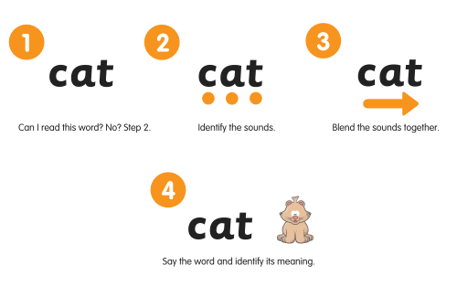
Research suggests a synthetic phonics approach (blending and segmenting phonemes) is the most efficient way to teach phonics. This is the approach the Sounds-Write program takes and is the program we have used at Dutton Park State School since 2021.
What is Vocabulary?
Vocabulary refers to knowledge of words, including their structure, use, meanings and links to other words. Words all have:
• meaning – which can vary according to context
• phonology – system of speech sounds
• morphology – meaningful word parts
• syntax – the way in which words are arranged to form phrases or sentences
• uses, which may be multiple, depending on context.
Oral vocabulary refers to words children can understand or use while speaking and listening. Oral vocabulary is closely related to reading vocabulary, which comprises the words children can recognise and use in their reading or writing.
What is Fluency?
Reading fluency has three different but complementary elements:
•
Accuracy: The number of errors compared to number of correct words read.
•
Rate: The speed or number of words read per minute.
•
Prosody: The quality of a child’s reading. This includes the use of rhythm, phrasing, intonation, expression, and use of voice for different characters or moods.
Accuracy, rate and prosody together are indicators of fluent reading. All are necessary for reading achievement, but not sufficient on their own.
Facilitating repeated practice of reading aloud is key to developing fluency. The goal for all children is for decoding to become easy and automatic, so they can free up their attention to focus on the meaning of the text.
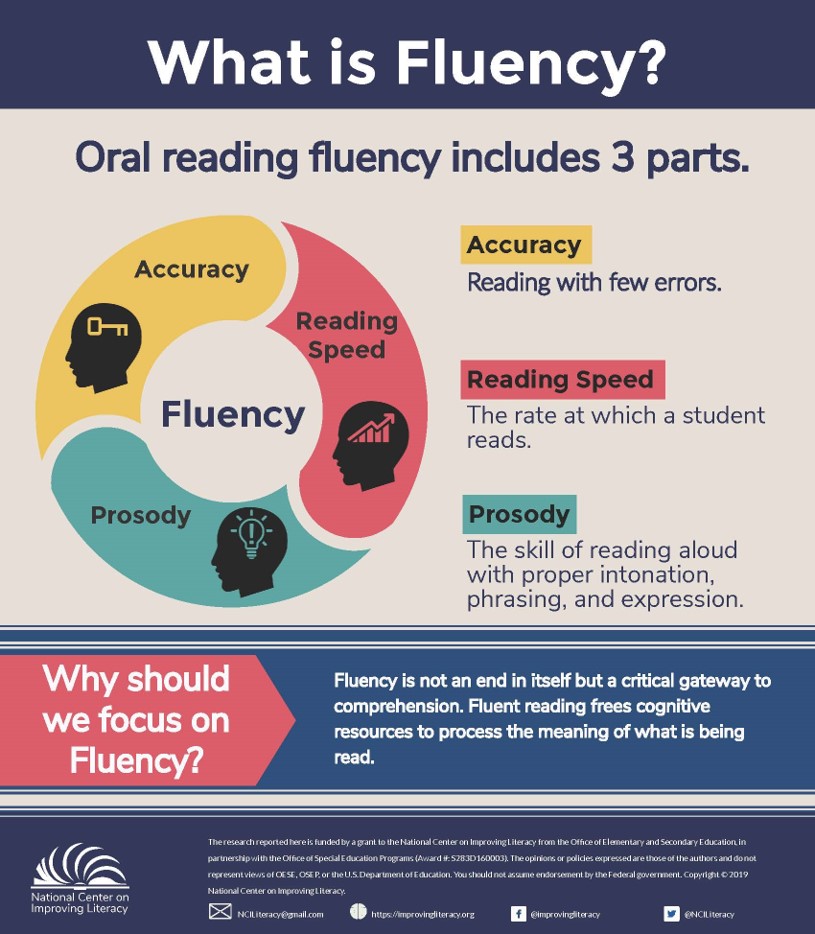
What is Comprehension?
Comprehension means understanding text: spoken, written or visual.
Reading Comprehension is extracting and constructing meaning from written text using knowledge of words, concepts, facts and ideas.
Comprehension is an active and complex process which:
• includes the act of simultaneously extracting and constructing meaning from text
• enables readers to derive meaning from text when they engage in intentional, problem solving and thinking processes
• is a lived and institutionally situated social, cultural and intellectual practice that is much more than a semantic element of making meaning
• is strongly related to background knowledge and vocabulary.
Along with the Big 6, what else is important to reading?
Orthography
Orthography is the accepted spelling system of a language.
Orthographical knowledge is the awareness and use of the symbols (letters or groups of letters) and patterns used to represent the individual sounds of spoken language in written form.
Four key elements of the English spelling system are...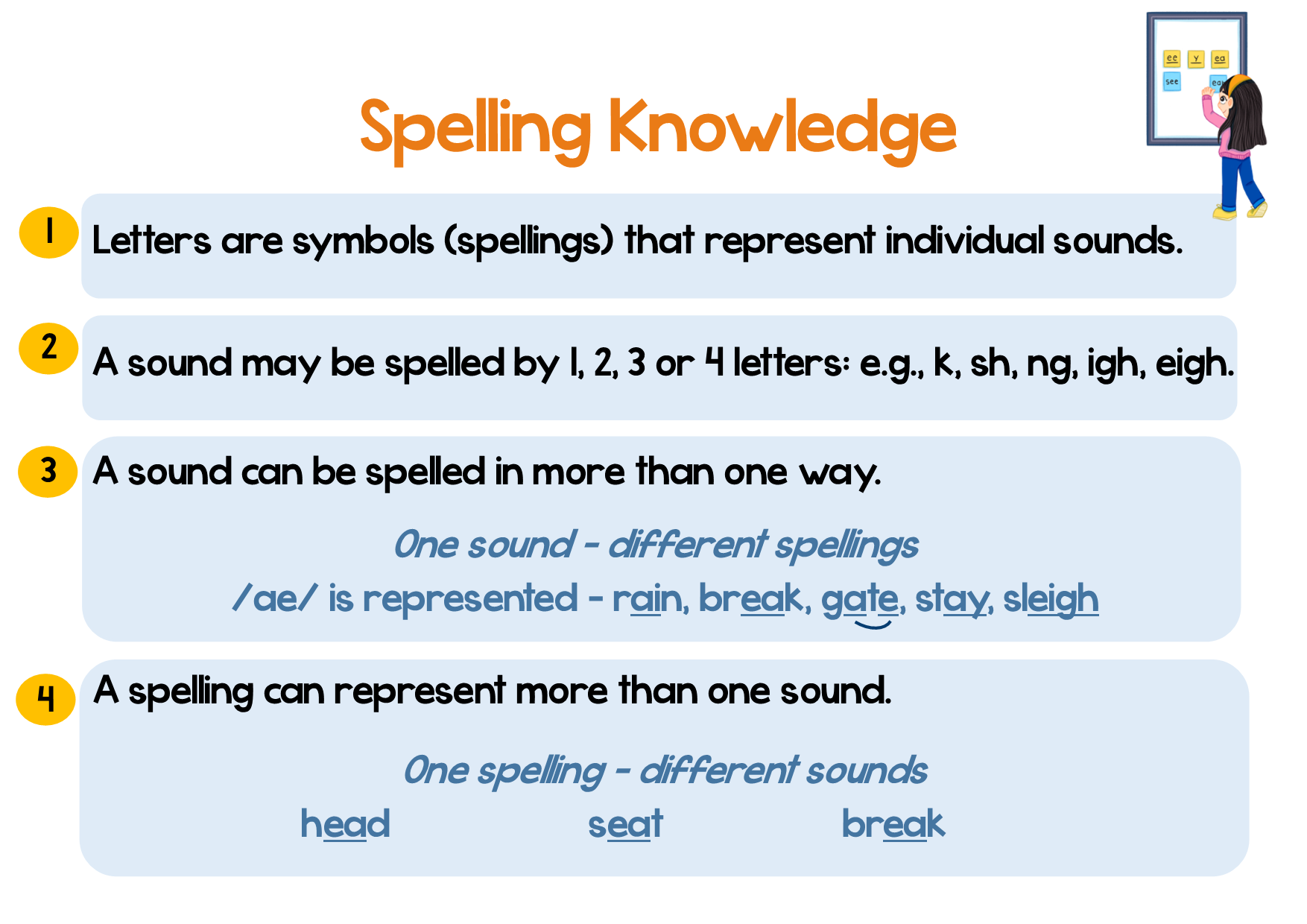
Spelling is taught alongside reading
The process of spelling (encoding) is the reverse to reading (decoding). It requires children to identify the sounds in a word and then to match a letter (or letters) with that sound to spell the word. This is a five-step process.

Quality Literature
Exposure to quality literature is integral to being a reader or writer. It comprises literary texts such as short stories, novels, poetry, prose, plays, film and multimodal texts. The pleasures and understandings afforded by engaged reading, interpreting, appreciating, evaluating and creating literature enable children to expand their ideas, think deeply and notice new things in their world.
Children need:
• dedicated classroom time for children to read independently, listen to reading, read to each other and to discuss their reading
• opportunities for children to be read to, to read with others, and to read by themselves at home
• opportunities for children to respond to what they read in a variety of ways e.g. through discussion, writing and drawing pictures.

Grammar and Syntax
As children develop their oral language skills, they also develop an understanding of
grammar (how words can change form to be combined with other words to create meaning) and
syntax ( the rules that govern the combining of words into sentences, and sentences combined into paragraphs). Knowledge of these rules helps children understand the relationships between words and apply vocabulary and abstract thinking to their comprehension of oral language.
Morphology
Morphology is the study of words and their smallest units of meaning. Morphemes are word parts, such as prefixes, suffixes and base words - the smallest meaningful units of language. English is a morphophonemic language therefore morphemes are just as important as phonemes (smallest unit of sound) to both reading and spelling. A knowledge of morphology as well as phonics assists the development of spelling, reading, vocabulary and comprehension.
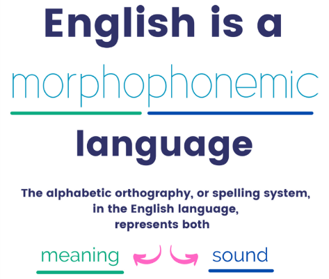
Teaching morphemes unlocks the structures and meanings within words. It is very useful to have a strong awareness of prefixes, suffixes and base words. These are often spelled the same across different words, even when the sound changes, and often have a consistent purpose and/or meaning.
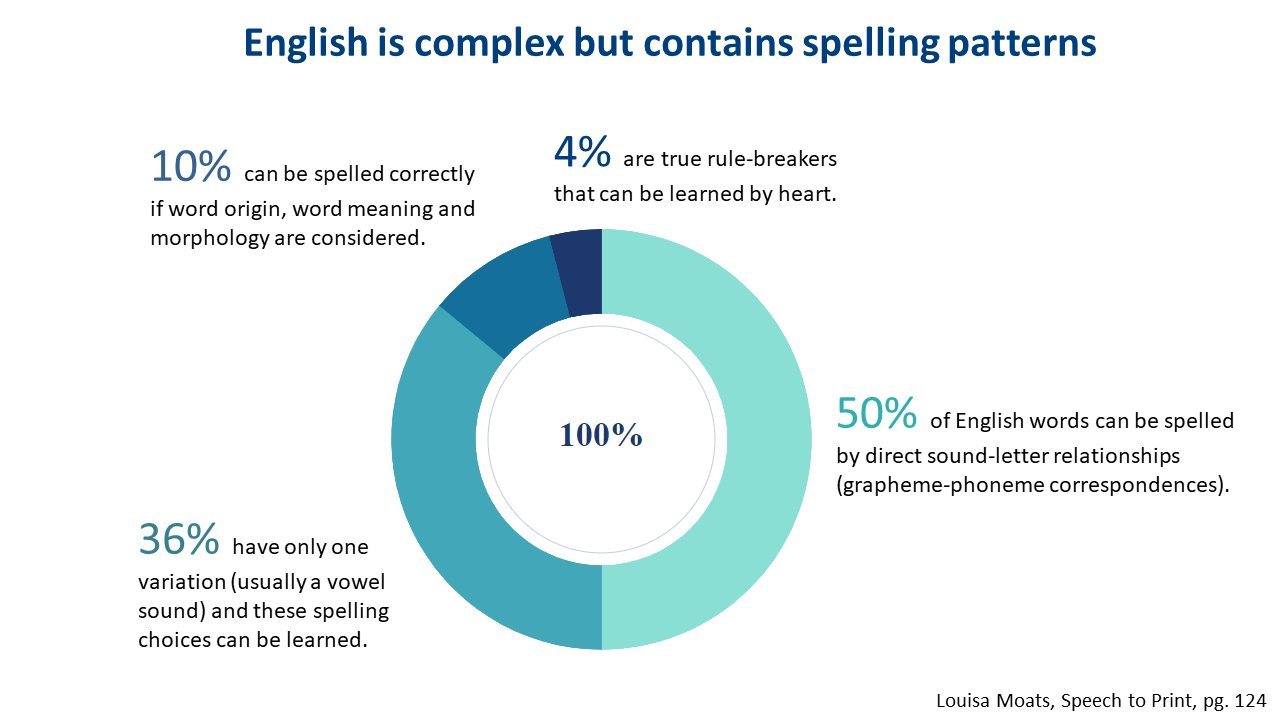
Teaching at DPSS is explicit, systematic and cumulative with a gradual release of responsibility from the teacher to the student.
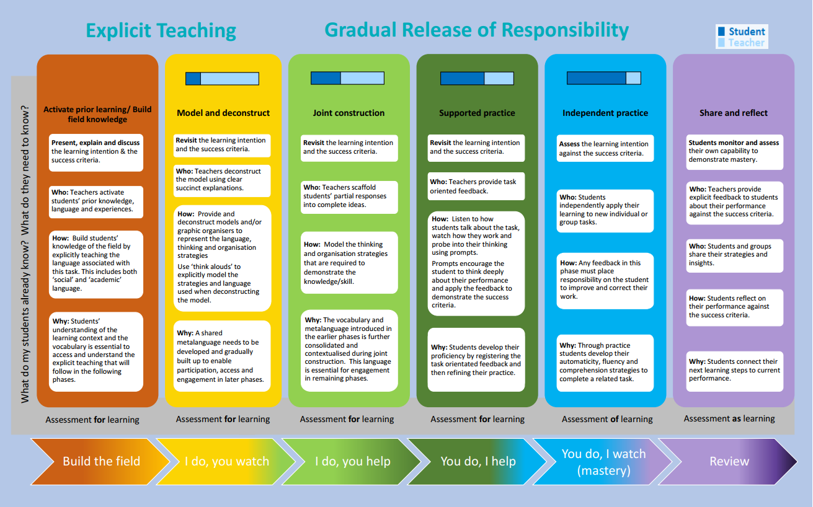
We use Rosenshine’s Principles of Instruction to plan and implement learning experiences.

Based on this research, we continue to…
- use the Heggerty Phonemic Awareness Program to build phonemic awareness.
- use the Sounds-Write Program for phonics and spelling.
- use evidence-based practice to teach and review high frequency words.
- use decodable books aligned to the Sounds-Write sequence of sounds that children have been taught in their phonics lessons.
- prioritise the speech-to-print approach to use phonic knowledge to sound out unknown words when reading (decoding) and spelling (encoding)
- use repeated reading, partner reading and other fluency practices to develop and extend student reading fluency.
- use high quality literature aligned with the curriculum focus to develop background knowledge, vocabulary and comprehension.
- develop a deep understanding of vocabulary and spelling through morphology, etymology and direct links between reading and writing.
Reading at DPSS. We continue to learn about how the brain develops and changes as we learn to read, and which instructional practices are most effective for all children. We are guided by scientific research to ensure that we deliver on the promise of literacy for every DPSS student. We welcome the recent EQ Reading Position Statement (https://education.qld.gov.au/curriculums/Documents/reading-position-statement.pdf) detailing many of the practices already in place at DPSS. Again, as more research makes its way into the classroom it’s an exciting time to be in education and we invite parents to partner with us to determine the best outcomes for all our children.